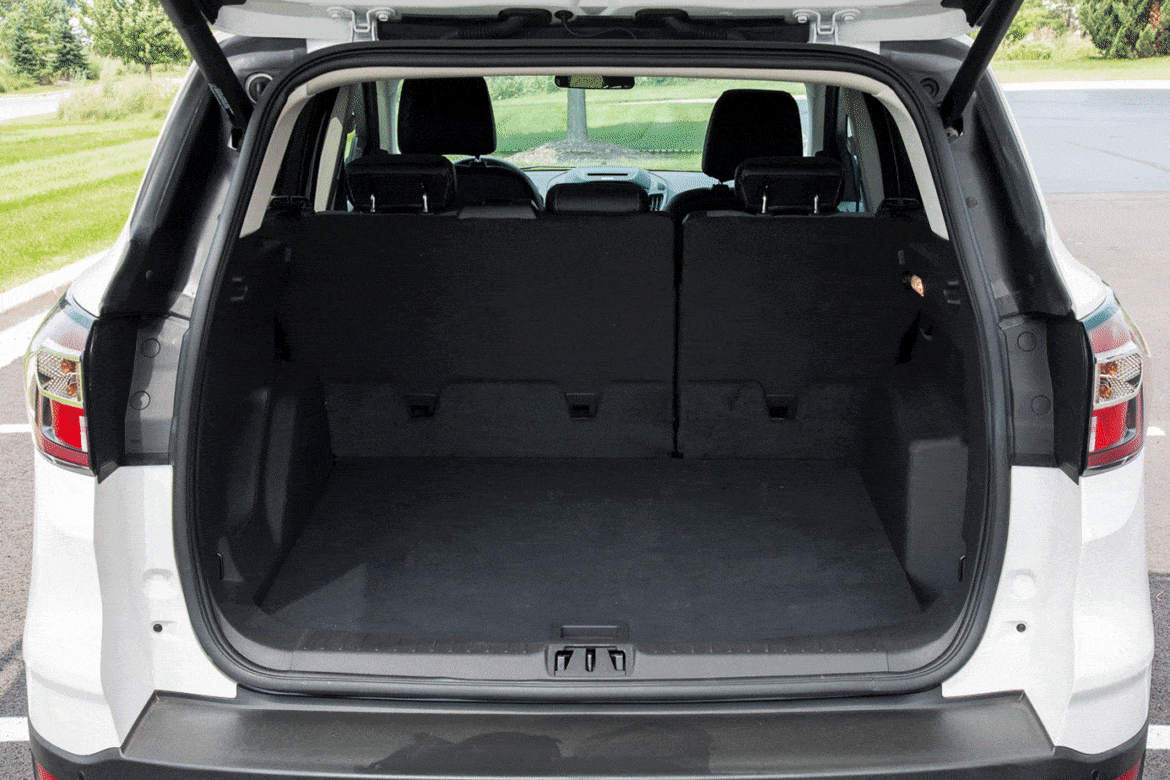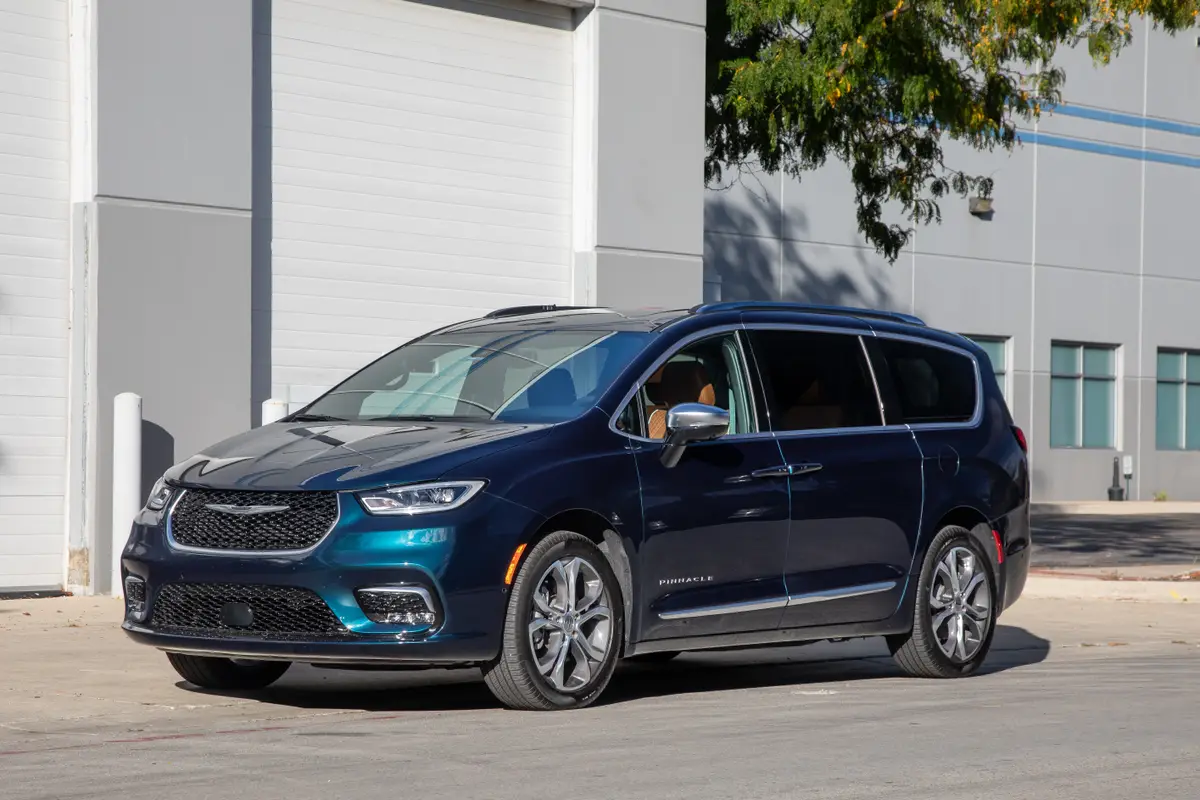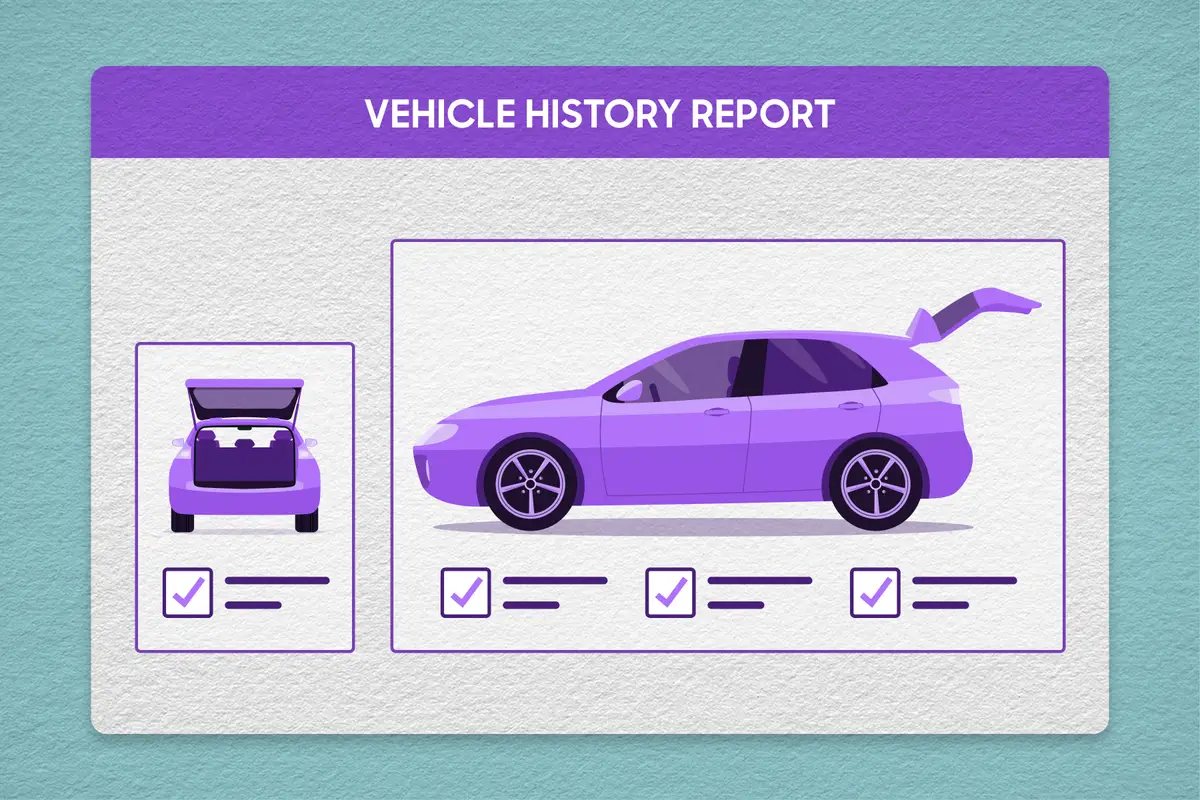2017 Ford Escape: Real-World Cargo Space


CARS.COM — The 2017 Ford Escape SUV has 34.3 cubic feet of cargo space behind the back seat and 67.8 cubic feet of cargo space with the backseat folded, but what do those dimensions really look like? Specs like interior cargo volume can be misleading, so for Cars.com’s 2017 Compact SUV Challenge, we placed a standard set of cargo items in each rear cargo area to visualize the differences between the 2018 Chevrolet Equinox, 2017 Escape, 2017 Honda CR-V, 2017 Jeep Compass, 2017 Mazda CX-5, 2017.5 Nissan Rogue and 2018 Volkswagen Tiguan.
- ${price_badge()}
- ${ami_badge()}
- ${battery_badge()}${ev_report_link()}
- ${hot_car_badge()}
- ${award_badge()}
- ${cpo_badge()}
${price_badge_description}
${ami_badge_description}
The EV Battery Rating is based on this vehicle's current expected range relative to the vehicles expected range when new. ${battery_badge_text}
This vehicle is certified pre-owned, backed by a manufacturer warranty, and typically undergoes a rigorous multi-point inspection to ensure quality and reliability.
This vehicle is currently in high demand given its competitive price, desirable features, and overall condition, and may have a higher chance of selling quickly.
Shop the 2017 Ford Escape near you


Cargo included a 23-inch adult bicycle and an adjustable cardboard box tested in two sizes: 37 inches long, 6 inches wide and 41 inches tall, which we fit behind the backseat, and an expanded 70-by 6-by-41 inches, which we fit with the backseat folded. And to top it off, a pair of golf bags. Though we laid the cardboard box flat for visualization of the cargo area, general practice for transporting a cardboard box like ours with a flat-screen TV inside is to keep the TV upright.

Ford gave the Escape an extremely tall cargo opening and low load-in height, so it looks like there’s a ton of space in the interior. It’s big, but the opening is narrow and the bumper protrudes a fair amount outward from the cargo area, so loading the bicycle into the vehicle meant brushing the bike on the bumper to get it up and over into the cargo area. The area where the cargo drags over is plastic, so there’s a risk it could get scratched over time. The expanded box fit, but we had to cram it down between the narrow wheel wells. The small box didn’t fit, though only one cargo area in this test could: the 2018 Volkswagen Tiguan.





















Managing Editor Joe Bruzek’s 22 years of automotive experience doesn’t count the lifelong obsession that started as a kid admiring his dad’s 1964 Chevrolet Corvette — and continues to this day. Joe’s been an automotive journalist with Cars.com for 16 years, writing shopper-focused car reviews, news and research content. As Managing Editor, one of his favorite areas of focus is helping shoppers understand electric cars and how to determine whether going electric is right for them. In his free time, Joe maintains a love-hate relationship with his 1998 Pontiac Firebird Trans Am that he wishes would fix itself. LinkedIn: https://www.linkedin.com/in/joe-bruzek-2699b41b/
Featured stories














